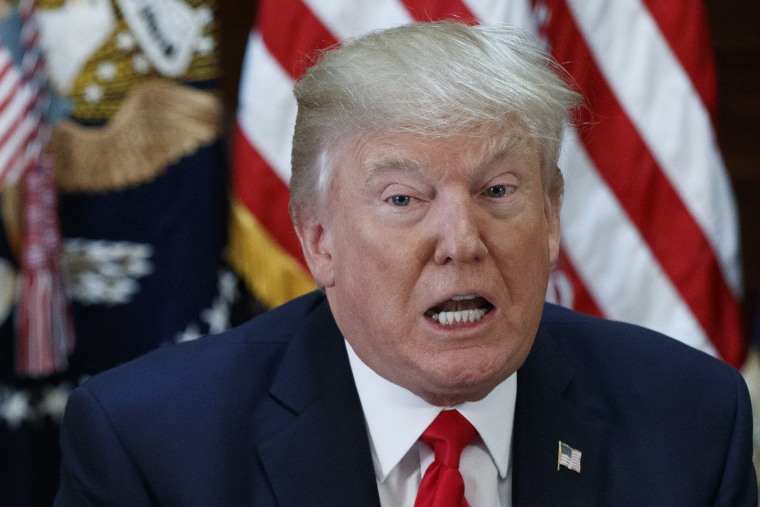Before launching his presidential campaign, Donald Trump struggled throughout his adult life in his private-sector ventures. The New York Republican was often over-leveraged, faced multiple bankruptcies, and routinely tried to cut costs by refusing to pay contractors what they were owed. He's a rare people who managed to lose money running a casino.
With Trump now in the White House, we're starting to get a better sense of why he had so many difficulties in the business world. As The Daily Beast noted, the president tried to argue last night that he's already managed to shave off a huge chunk of the national debt.
"The country -- we took it over and owed over $20 trillion. As you know the last eight years, they borrowed more than it did in the whole history of our country. So they borrowed more than $10 trillion, right? And yet, we picked up $5.2 trillion just in the stock market," Trump told Sean Hannity. "So you could say, in one sense, we're really increasing values. And maybe in a sense, we're reducing debt. But we're very honored by it."
This wasn't just some verbal gaffe. Yesterday afternoon in Harrisburg, during a speech on taxes, he pushed a related point: "Very proudly, just in the stock market alone, we have increased our economic worth by $5.2 trillion, that's right, since Election Day. $5.2 trillion. Think about that, that's a quarter of the $20 trillion that we owe."
This is gibberish. They're the remarks of someone who doesn't know what the national debt is. Or how the nation's finances work. Or even how money works.
Let's try to make this plain. When the government spends more than it takes in over the course of a year, it runs an annual budget deficit. When this happens repeatedly over the course of several years, the cumulative totals of these deficits is the national debt. Currently, the national debt is, as Trump noted, about $20 trillion.
This was, however, pretty much the only thing he got right. The president believes stock market gains over the last year or so are worth $5.2 trillion, and if he applies that money to paying off the debt, "in a sense" he's reducing the debt by nearly a fourth.
Except, that doesn't make any sense at all: unless the White House intends to seize all of that money, the $5.2 trillion isn't the government's money. The national debt is still $20 trillion -- and growing -- whether stock indexes go up or down.
What's more, instead of "reducing debt," Trump actually intends to add quite a bit more to the debt with a massive tax-cut package that he and his cohorts have no idea how to pay for.
Perhaps, some of you are thinking, we should cut the president some slack, since he's still an amateur who doesn't yet understand the basics of, well, much of anything. Maybe he simply needs more time to get up to speed on things like Government Finance 101. The trouble, however, is that if there's one thing Donald Trump should understand, it's debt. This has, after all, served as the backbone of his operations for many years.
And yet, even on the subject he should know the most about, the president is hopelessly lost.
